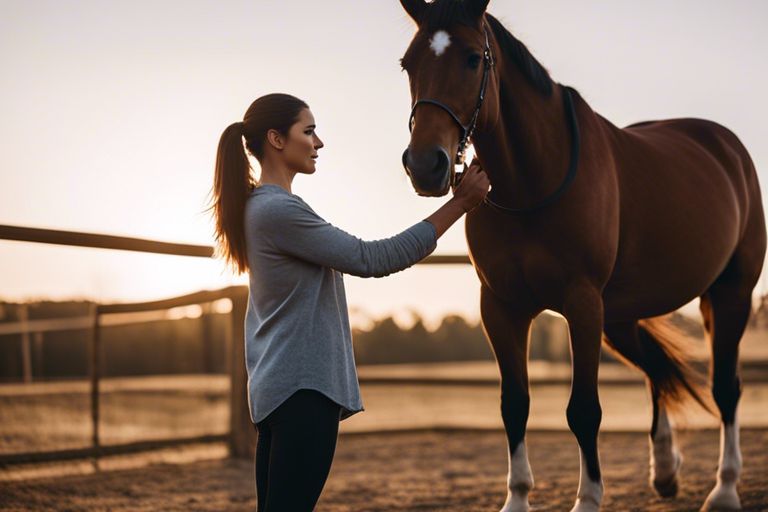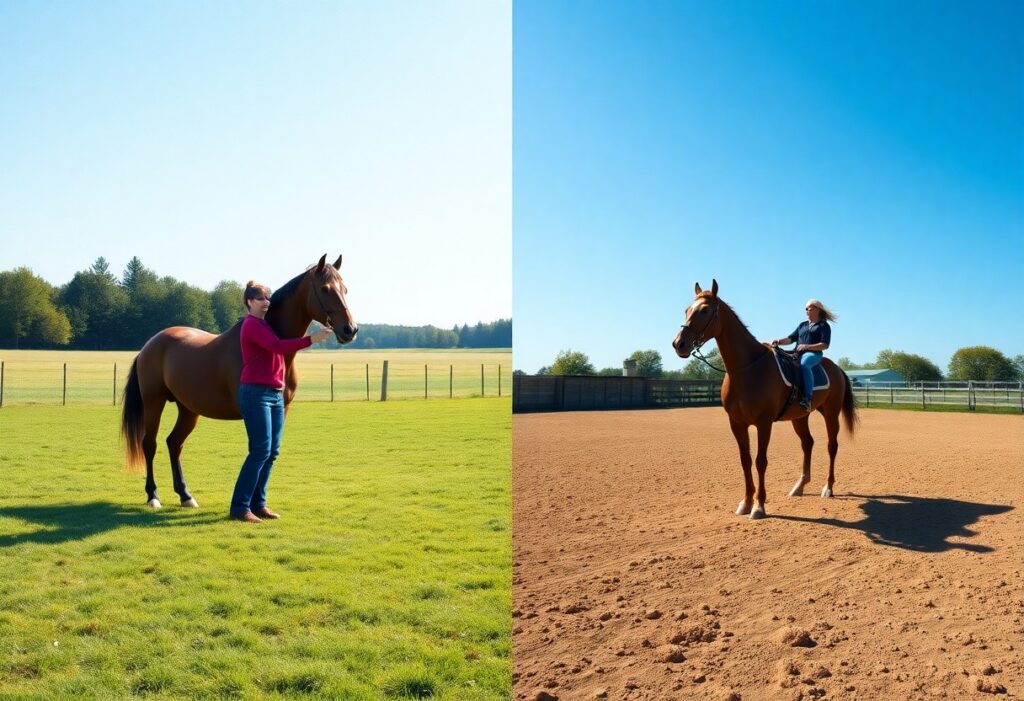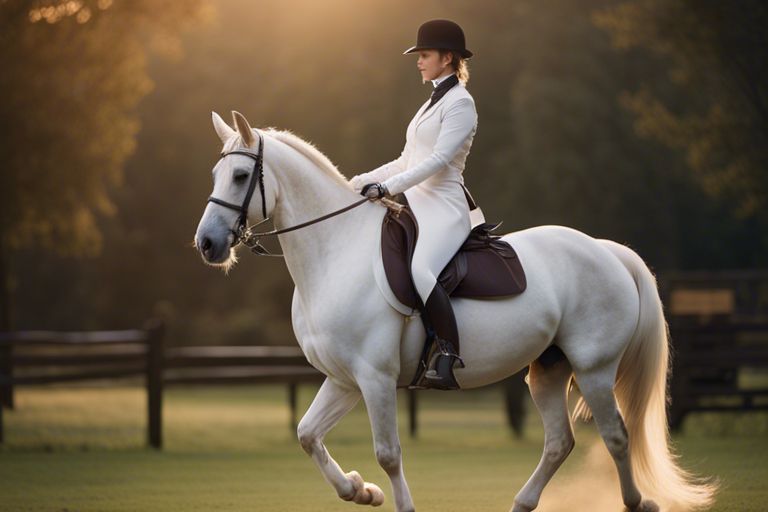It’s crucial to understand the importance of groundwork in horse training. By laying a solid foundation through groundwork exercises, you can build trust, establish respect, and create a strong bond with your horse. These exercises not only help prevent accidents and miscommunications, but also improve communication and understanding between you and your horse. Incorporating groundwork into your training regimen can make a significant difference in the overall success of your horsemanship.

The Foundations of Groundwork
While riding a horse can be exhilarating, it is crucial to start with the basics – groundwork. Groundwork forms the foundation for a successful partnership between you and your horse. It establishes communication, trust, and respect, creating a strong bond that will benefit all aspects of your training together.
Establishing Trust and Respect
One of the primary goals of groundwork is to establish trust and respect between you and your horse. By working on the ground first, you can build a solid foundation of trust that will carry over into your ridden work. Consistent, clear communication is key to gaining your horse’s trust and respect. By setting boundaries and expectations in your groundwork sessions, you are laying the groundwork for a harmonious relationship with your horse.
Building a Strong Bond between Horse and Handler
Handler
Building a strong bond between you and your horse is vital for successful training. Through groundwork activities, you can develop a deep connection with your horse based on mutual understanding and respect. Spending time together on the ground, working through exercises and overcoming challenges, will strengthen your relationship and create a partnership built on trust and communication.
Trust is the foundation of any successful relationship with a horse. By investing time in groundwork activities, you are showing your horse that you are a reliable and consistent leader. This will translate into a more confident and willing partner for all your future training endeavors.
Communication and Body Language
Clearly, effective communication is crucial when working with horses. Horses are highly attuned to body language and non-verbal cues, making it crucial for you to be aware of how you are interacting with your horse.
Reading Horse Behavior
Communication with your horse involves observing and understanding their behavior. Horses use body language to communicate their feelings, and by paying attention to their ears, eyes, posture, and tail movements, you can gain insight into how your horse is feeling and adjust your training approach accordingly.
Effective Use of Verbal Cues
The use of clear verbal cues can also enhance your communication with your horse. Verbal cues should be consistent and paired with the appropriate physical cues to help your horse understand what you are asking of them.
The timing of your verbal cues is crucial, as horses respond best when the verbal cue is given at the exact moment the desired behavior is performed. This helps your horse make the connection between the verbal command and the action you are asking for.
Non-Verbal Communication Techniques
Another aspect of effective communication with your horse involves using non-verbal techniques such as body positioning, energy, and gestures. Horses are highly responsive to subtle changes in your body language, so maintaining a calm, assertive demeanor and being aware of your own body language can greatly influence how your horse responds to you.
By using deliberate movements and staying attuned to your horse’s reactions, you can establish a clear line of communication without the need for verbal commands.
Safety Precautions and Equipment
Despite the many benefits of groundwork in horse training, it is crucial to prioritize safety when working with these powerful animals. By taking the necessary precautions and using the right equipment, you can minimize the risks and ensure a safe training environment for both you and your horse.
Essential Safety Gear for Handlers
Safety should always come first when handling horses. Essential safety gear for handlers includes a properly fitted helmet, sturdy boots with a heel to prevent your foot from slipping through the stirrup, gloves for a better grip on the lead rope, and a safety vest for added protection in case of a fall. Wearing this gear can significantly reduce the risk of injury while working with your horse.
Choosing the Right Equipment for Your Horse
For your horse, it is important to use well-fitted tack and equipment. Each horse is unique, so it’s important to choose equipment that suits your horse’s size, breed, and temperament. A well-fitting saddle, bridle, and halter are important for groundwork exercises. Make sure to check your equipment regularly for any signs of wear and tear to avoid accidents during training sessions.
Another crucial piece of equipment to consider is a properly fitting lunging cavesson or halter. This piece of equipment allows you to attach a lunge line to guide your horse in circles during training. A well-fitted cavesson ensures that your horse is comfortable and helps maintain better communication between you and your horse during groundwork exercises.
Creating a Safe Training Environment
Your training area should be free of any potential hazards that could spook or injure your horse. Clear the space of debris, secure loose objects, and ensure that fences and gates are in good condition. By creating a safe training environment, you can focus on your training without worrying about unexpected incidents that could harm you or your horse.
Understanding your horse’s behavior and body language is also key to maintaining a safe training environment. By recognizing signs of stress or discomfort, you can adjust your training methods accordingly and prevent potential accidents. Building a trusting relationship with your horse through groundwork will also contribute to a safer and more enjoyable training experience for both of you.
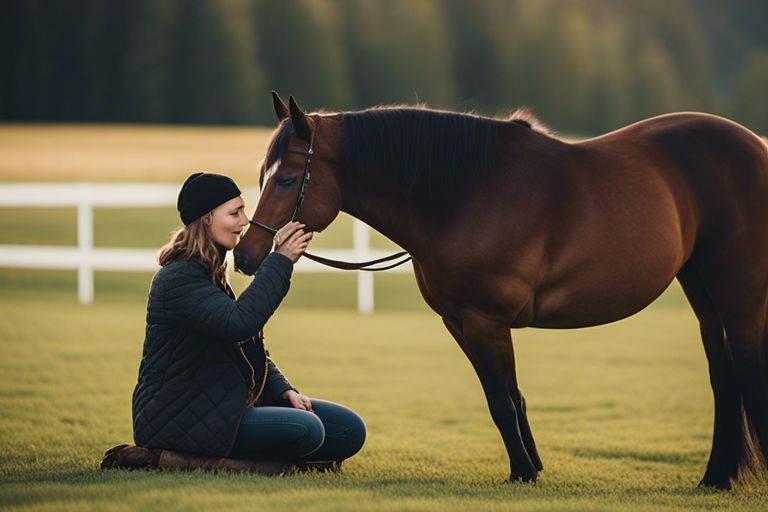
Basic Groundwork Exercises
Now, let’s examine into some of the basic groundwork exercises that are important for laying a solid foundation in your horse’s training.
Halter Breaking and Leading
Leading is a fundamental exercise that establishes your authority and builds trust with your horse. Start by introducing your horse to the halter and teaching them to respond to pressure cues. Practice leading your horse in different directions, making sure they maintain a respectful distance from you. Consistency is key here; consistent handling will help your horse understand the boundaries and grow more comfortable with being led.
Desensitization and Counterconditioning
Exercises focused on desensitization and counterconditioning are crucial for helping your horse develop confidence and trust in various situations. Introduce your horse to different objects, sounds, and movements gradually, rewarding calm behavior. Over time, your horse will learn to remain calm and relaxed in potentially stressful situations, making them safer to handle and ride.
Another important aspect of desensitization is familiarizing your horse with being touched all over their body, including sensitive areas like ears and legs. This process helps your horse become more at ease with grooming, veterinary exams, and general handling.
Teaching Basic Obedience Commands
An obedient horse is a safe and enjoyable horse to work with. Start by teaching your horse simple commands like ‘whoa’ (stop) and ‘back’ (move backward). Use positive reinforcement such as treats or praise to reward your horse for responding correctly. Consistent practice will reinforce these commands and improve communication between you and your horse.
Counterconditioning exercises can also be incorporated into obedience training to help your horse overcome fears or negative associations with certain cues or commands. By pairing these cues with positive experiences, you can retrain your horse’s responses and build a more trusting relationship.
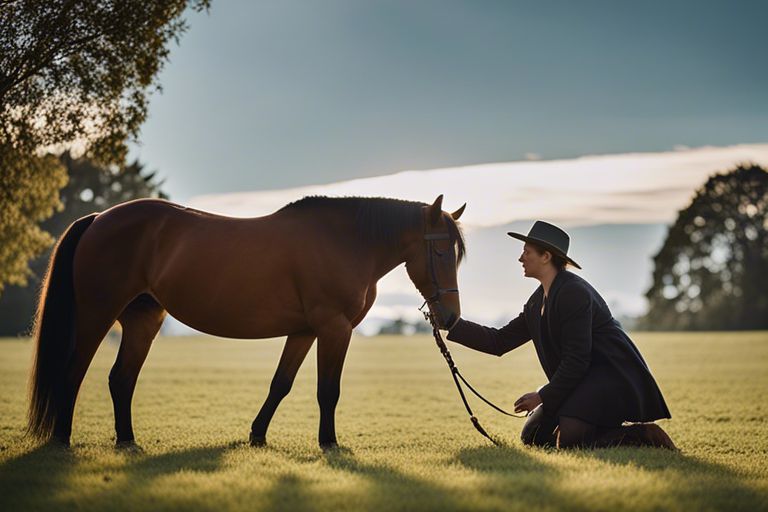
Advanced Groundwork Techniques
Keep advancing your groundwork skills by incorporating these advanced techniques into your training routine:
- Lateral Work and Flexibility Exercises
Key Points Benefits Incorporate leg yields, shoulder-in, and haunches-in. Improves flexibility, balance, and responsiveness. - Long-Lining and Long-Reining
To enhance your groundwork, introduce long-lining and long-reining exercises. These techniques involve working your horse from the ground using long lines attached to the bit and surcingle. This helps improve your horse’s suppleness, obedience, and overall connection with you.
Groundwork
Work on refining your communication and connection with your horse through long-lining and long-reining. By mastering these techniques, you can effectively communicate cues and commands to your horse while maintaining control from the ground.
Refining Transitions and Turns
LongLining
Long-lining and long-reining are useful for refining the transitions and turns in your horse’s movement. By practicing these exercises regularly, you can improve the smoothness and accuracy of your horse’s transitions between gaits and turns. These refined movements enhance your overall communication and partnership with your horse.
Exercises
Engage in lateral work and flexibility exercises to enhance your horse’s agility and responsiveness. These exercises help your horse develop better balance, coordination, and overall athleticism. Be sure to start slowly and gradually increase the difficulty level to avoid overworking your horse.
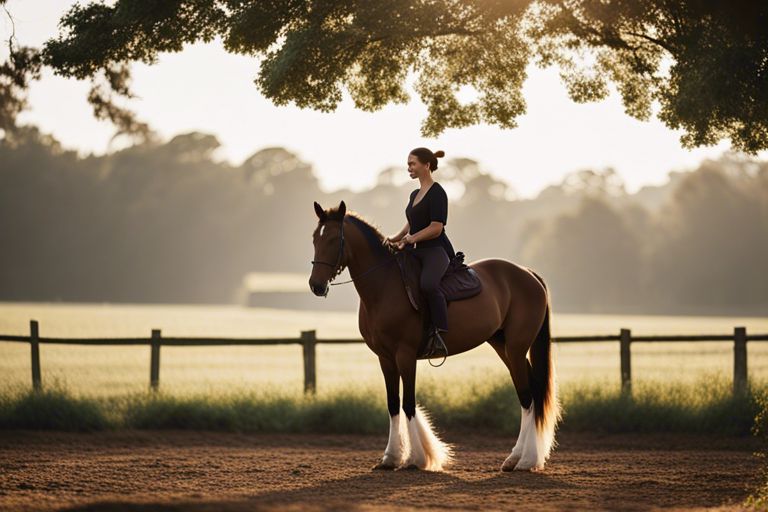
Overcoming Common Challenges
Dealing with Fear and Resistance
For many horse trainers, dealing with fear and resistance from horses is a common challenge. Any resistance, whether due to fear or stubbornness, can be overcome with patience, understanding, and proper groundwork techniques. Bear in mind, your horse may be reacting out of fear, past negative experiences, or simply because they are unsure of what you are asking of them. By building trust through groundwork exercises, such as desensitization work and consistent, clear communication, you can help your horse overcome their fears and develop a more willing attitude towards training.
Managing Dominant or Aggressive Behavior
One of the most important aspects of managing dominant or aggressive behavior in horses is to establish yourself as the leader in a calm and assertive manner. Any signs of dominance or aggression should be addressed promptly and consistently during groundwork sessions. By setting clear boundaries, practicing respect, and using effective body language, you can establish a harmonious relationship based on mutual trust and respect.
Aggressive behavior, such as biting, kicking, or rearing, should never be tolerated and must be addressed immediately. Seek professional help if you are unsure how to safely handle aggressive behavior in your horse.
Addressing Health Issues and Injuries
Issues related to health, such as lameness, stiffness, or weight problems, can greatly impact your horse’s training progress. It’s important to address any health concerns promptly and work with a veterinarian or equine professional to develop a plan to improve your horse’s physical well-being. By addressing these issues, you can ensure your horse is comfortable and able to perform to the best of their ability during training sessions.
Injuries can also pose a challenge when training horses. Always adhere to proper warm-up and cool-down routines, and be vigilant for any signs of discomfort or pain during groundwork exercises. If you suspect your horse is injured, stop training immediately and consult with a vet before resuming any activities.
Final Words
Hence, it is crucial to understand the significance of groundwork in horse training. By establishing a solid foundation through groundwork exercises, you can build trust, respect, and communication with your horse. Taking the time to work from the ground up will ultimately improve your relationship with your equine partner and set both of you up for success in future training endeavors.
Q: Why is groundwork important in horse training?
A: Groundwork is important in horse training because it helps establish trust and respect between the horse and the handler, builds a solid foundation for further training, improves communication, and promotes safety.
Q: What are some basic exercises commonly included in groundwork training?
A: Some basic exercises in groundwork training include leading exercises, lunging, desensitization to different stimuli, ground tying, backing up, yielding hindquarters, and forequarters, among others.
Q: How does groundwork help in addressing behavioral issues in horses?
A: Groundwork helps in addressing behavioral issues in horses by teaching them to respect boundaries, establishing leadership roles, building confidence, and redirecting negative behaviors into positive responses through consistent and clear communication.
Q: Can groundwork benefit a horse’s physical health and well-being?
A: Yes, groundwork can benefit a horse’s physical health and well-being by promoting muscle development, enhancing flexibility and coordination, improving balance and body awareness, and preventing injuries by ensuring the horse is mentally and physically prepared for more advanced training.
Q: How often should groundwork be incorporated into a horse’s training routine?
A: Groundwork should be incorporated into a horse’s training routine regularly, ideally as a consistent part of daily interactions to maintain and strengthen the foundation of trust, respect, and communication between the horse and the handler.
